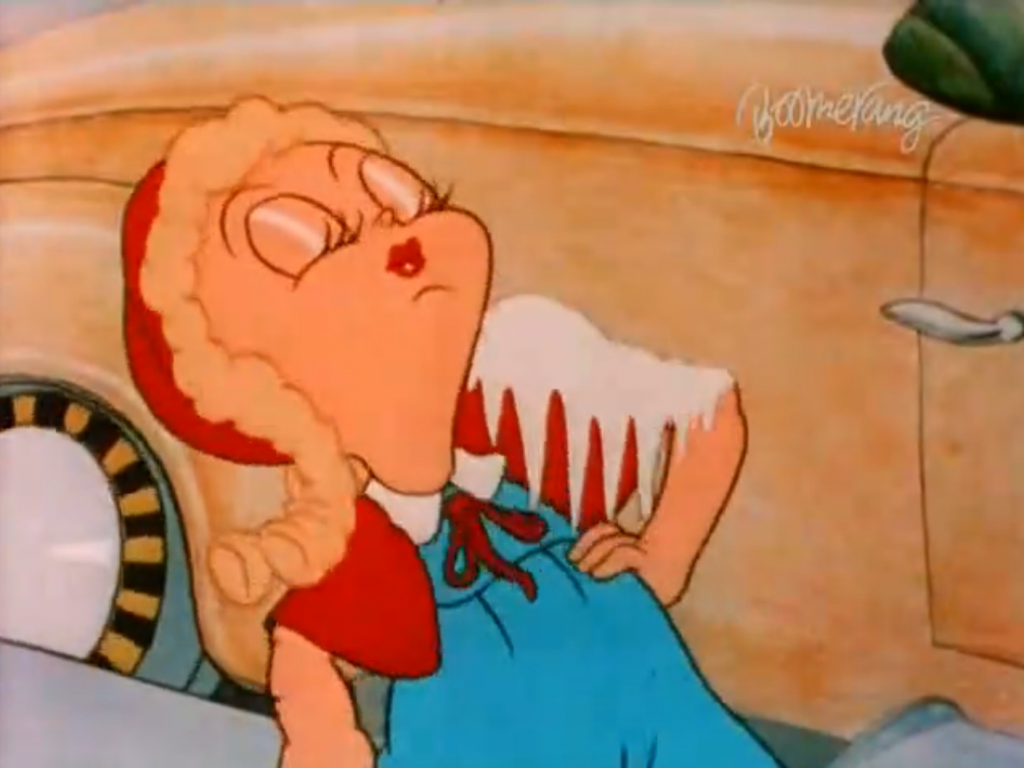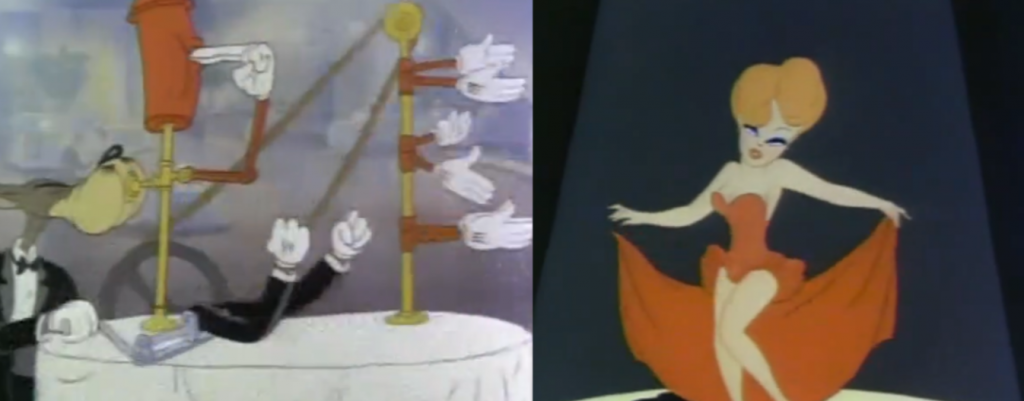In modern times, relationship dynamics between fairy tale heroes and heroines (especially the comatose ones) have come under criticism for exhibiting rapey power dynamics. But the relationship between Little Red Riding Hood and her wolf seems pretty clearly intended to comment on rape and punishes the would-be abuser in the text.
A vicious male wolf preying upon a young girl brings with it natural sexual overtones. A Charles Perrault take on the story even ends with the following moral: “Children, especially attractive, well bred young ladies, should never talk to strangers, for if they should do so, they may well provide dinner for a wolf. I say ‘wolf,’ but there are various kinds of wolves. There are also those who are charming…who pursue young women at home and in the streets. And unfortunately, it is these gentle wolves who are the most dangerous ones of all.”
The story is so sexual that media geared towards very young children sometimes sanitizes the story by having Wolf long to eat Red’s goodie basket rather than Red herself. Never mind that the continued presence of Little Red Riding Hood in oh so many adaptations and anthologies proves that preschool children are perfectly capable of consuming a gory story about girl-eating wolf getting hacked open by a woodsman.
Adaptations of Little Red Riding Hood geared towards older kids can be read as a tutorial for children showcasing why talking to strangers is a bad idea. Many adaptations show Red cluelessly giving away too much information to the wolf, such as the location of her grandmother’s house; as well as letting Wolf lure her into a secondary location, usually off the path to pick flowers. The fact that Red continues to talk to Wolf at all, and often does so very respectfully, helps him to continue to prey on her.
While Red may make mistakes that turn her into easy prey, the actual problem is that the Wolf wants to be a predator. Television uses the wolf to expose predatory tactics, like complimenting a young girl, claiming to know a trusted adult, and appealing to her sense of maturity and adventure to get her to wander off the path. The purpose of all of these is to seduce the girl into a false sense of security. The wolf of Grimm’s Fairy Tale Classic tells the audience, “I’ll get her to trust me because I’ll pretend that all I want is to be her good friend.”

Many adaptations feature wordplay revolving around food compliments. The wolf of Happily Ever After calls Red a “sweet little child.” In a 1983 episode Shelley Duvall’s Faerie Tale Theatre, he compliments her on her “scrumptious” cloak. This adaptation highlights the sexual overtones of the story. Red is a teenager, not a child, and the Wolf encourages her to climb into bed with him while he’s disguised as Grandma.
When American Playhouse broadcast a taping of the musical Into the Woods in 1991, Wolf’s seduction of Red in the song “Hello Little Girl” was seen as funny, judging by the laughter of the live audience. But the 2014 Disney adaptation, staring Lilla Crawford and Johnny Depp as Red and Wolf respectively, the pedophilia vibe is on in full force. At one pont, Wolf throws open his jacket to show Red an assortment of candy hung like a sketchy watch salesman’s wares, tying into the common adult caution against taking candy from strangers.

Some adaptations feature more mature Red Riding Hoods. While modern people love to think of themselves as so very revolutionary, injecting progressive messages and feminine empowerment into medieval-era stories that dare to feature medieval-era social norms, obliterating rapey relationship dynamics as we go along our merry way, filmmakers have actually been using fairy tales to comment on sexual harrassment since before the age of household television sets.
A 1937 Looney Toons short, Little Red Walking Hood, lifts the story out of the woods and into an urban setting. Wolf pulls up in his snazzy car and offers Red a ride. Physically, Red looks like a child in body and fashion, but when she speaks, she has the voice of a mature, refined woman. She turns the audience and monologues about street harassment. “A girl has to put up with such embarrassing situations. Really we do, don’t we, girls? Too bad for you girls out there going through just what I’m going through now. You know how it is, don’t you, girls?”
But even as she tells him off, she has cutesy, mannerisms that intrigue him, including batting her eyelashes, pursing her lips, and clasping her hands up by her face. She is simultaneously girlish and womanly, perhaps showing how a predator might perceive a victim. When the Wolf pulls up again and tries to sweet-talk her, she tells him to scram and visually gives him a “cold shoulder,” with icicles growing off her arm through the magic of cartoons.

In MGM’s 1943 Red Hot Riding Hood, Wolf becomes enamored with the sexy Red’s musical performance at a Hollywood nightclub. His two-note whistle in response are the source of the term, and possibly popularized the practice of, wolf whistling. Men certainly knew how to harass women before cartoons demonstrated this one method, though the cartoon and other media using the wolf whistle introduced a new technique to do so, highlighting that it is possible for an audience to internatlize only part of a story’s message.
After her song, Wolf asks her out, but she explains she has the prior commitment of going to grandma’s house. When Wolf refuses to take no for an answer, Red demonstrates the proper way for a young lady to respond to such a suitor: scream “No,” throw a table lamp at his face hard enough to send an electrical current through his muzzle, and catch the next cab to Grandma’s house.

Wolf gets to Grandma’s before Red and Grandma is all too happy to see him. Just as many classic cartoons have a mouse, roadrunner, or rabbit beating up the animal that would naturally hunt them, Grandma turns predator rather than prey and chases the wolf around her penthouse in a law-of-physics-defying pursuit to kiss him. The short ends with Wolf committing suicide rather than look at another woman, though his ghost continues to howl at her.
Both of these classic-era cartoons sexualize Red. The Looney Toons short dresses her in a short skirt that shows a flash of lacy little girl panties as she walks and MGM gives her an extended burlesque number in heels and a frilly leotard.
In a cartoon, everything is, to some extent, funny. A person getting bopped on the head with an anvil would garner at least a PG-13 rating in a live action film, but it’s all in good fun if you can get back up and chase the roadrunner again. So while a scantily clad heroine getting wolf-whistled can certainly be taken as humorizing harassment in the rough way of early cartoons, and this cartoon may have given male viewers a new tool to harass women, the Wolf’s inherent villianization, his rebuffment by Red, and punishment by Granny get across the message that such behavior is not okay.
In an era increasingly concerned with identifying and striking out problematic sexual dynamics in classic stories, perhaps we should pay increased attention to a story that has always highlighted and called for punishment of peversion, and the adaptations that showcase young girls and grown women recognizing and responding to problematic behavior while predators making a laughingstock of themselves.